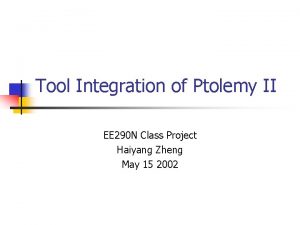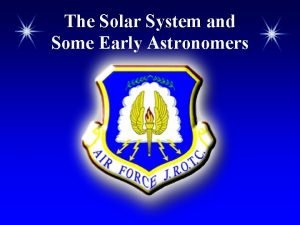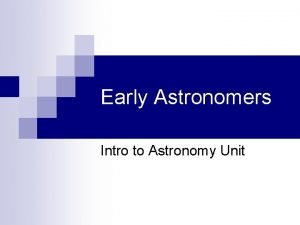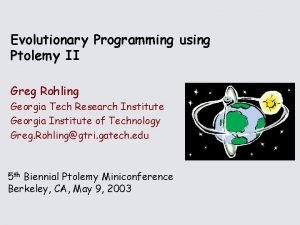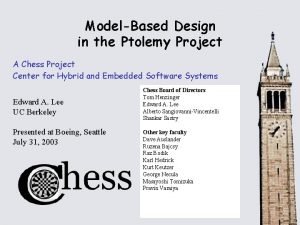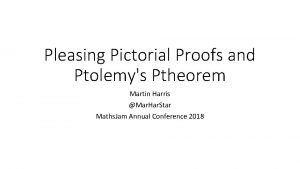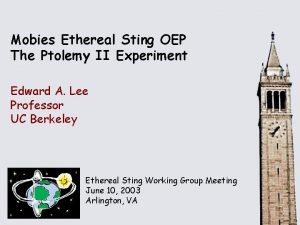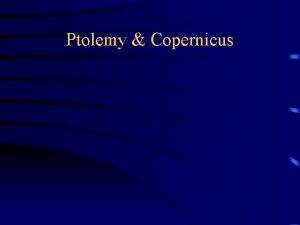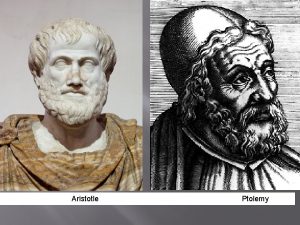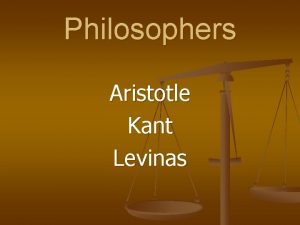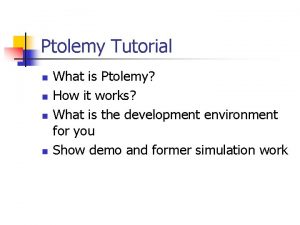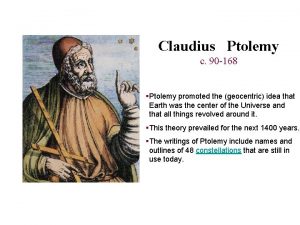Lecture 16 01 29 08 Aristotle Ptolemy The








- Slides: 8

Lecture 16: 01 -29 -08 • Aristotle, Ptolemy, The Scientific Revolution • The consolidation of arguments to a visible model: • One can picture it: the Unmoved Mover (which can be replaced by the Christian God), starting everything in motion in a quest for the Good. • At every level, this is the best of all possible worlds: • The Great Chain of Being; the Plenum: if it had potential, it has developed in the direction of the good. • Evil is error and stupidity

Ptolemy (~100 -170 AD) • Egyptian astronomer of Greek descent. • Two major texts: Almagest and Planetary Hypotheses. Formalizes the general outline of the Aristotelian cosmology in a geocentric model of the solar system.

The Ptolemaic Universe • Geocentric model Sphere of Prime Mover Fixed stars Saturn Jupiter Mars SUN Venus Mercury Moon EARTH Each body Affixed to a Crystalline Sphere.

Plantetary Motion: “Planet” means Wanderer (from Πλαναω) • Orbits of the spheres are circular • Each celestial body may rotate at the edge of its sphere. • The calculation of the planet’s position used the equant and the deferent, show the relative position of the planet to the earth. (which will appear elliptical) • The result permits tracking the motion of a planet (especially it’s retrograde motion) from the vantage point of an observer on earth. Epicycle Deferent Equant

Retrograde motion

Problems: “Saving the Appearances” • 1. The retrograde motion of Mercury (Hermes, the messenger of the gods) bounces around like crazy ball in a small room. • 2. The epicycles rarely were sufficient, so there would be epicycles within epicycles (in the case of Mercury, something like 7 levels deep? ) • 3. The Catholic Calendar: fifth Lateran council, under Julius XII (1515 -1517) sought to reconcile all calendars: initial failure.

Copernicus and the Scientific Revolution • Nicholas Copernicus (1473 -1543) De Revolutionibus Orbium Coelestium (On the Revolutions of the Heavenly Spheres) 1543. • Forced to recant in humiliation by the Inquisition.

Tycho Brahe (1546 -1601) & Johannes Kepler (1571 -1630) • Large collection of astronomical observations by Brahe, furnished to Johannes Kepler • Kepler’s model: the “five Platonic Solids”: the distances of the orbits of the celestial bodies, starting from the sun, appear to match the radii of the five Platonic Solids inscribed inside each other. • Mystery of the Universe (1596) • Harmony of the Spheres (1619) • Crucial mathematical equations for calculating orbits.

